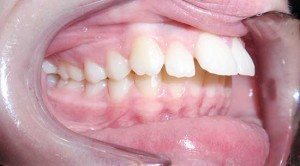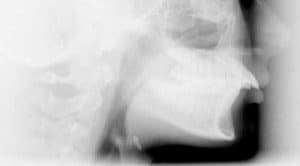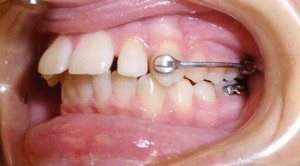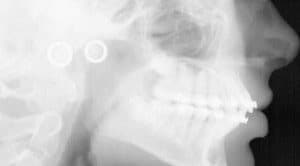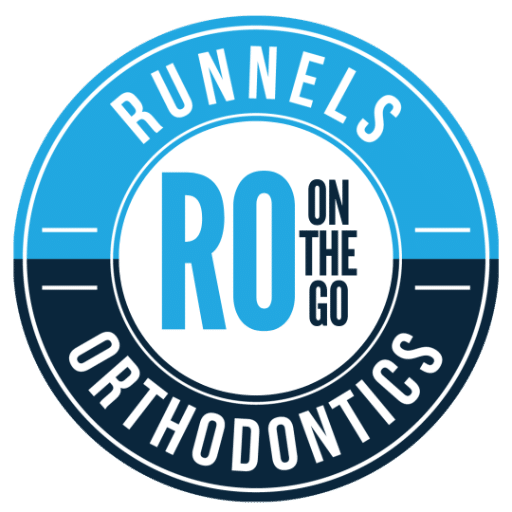If you are preparing for braces or aligners, you might need to take an extra step to correct a misaligned bite first. Proper bite alignment sets the foundation for successful orthodontic treatment and healthier teeth in the long run. The Carriere distalizer appliance is a convenient and effective way to address bite issues before beginning braces. At Runnels Orthodontics in Destin, FL, we address bite concerns early to make transitioning to braces or aligners a smoother process for patients of all ages.
What Is the Carriere Distalizer Appliance?
The Carriere distalizer, also known as Carriere Motion™, is used to correct Class II malocclusions, where the upper teeth are positioned too far forward relative to the lower teeth. This device gently moves the upper molars back into proper alignment and creates a more balanced bite. The process typically involves attaching the appliance to the upper teeth, with elastics connecting it to the lower arch to guide the movement.
By addressing bite alignment, the Carriere distalizer can prepare the teeth and jaw for braces, clear braces, or aligners. This step helps reduce the complexity of orthodontic treatment and allows braces or aligners to be used solely for straightening the teeth rather than correcting bite issues.
What Can the Carriere Distalizer Correct?
Posterior Occlusion
Posterior occlusion treatments correct how the upper and lower back teeth fit together when the mouth is closed. A misalignment in this area can lead to an uneven bite, making it harder to chew properly or maintain oral health. The Carriere distalizer helps guide the upper molars into their correct position, improving the overall alignment of the back teeth and creating a balanced bite.
Maxillary Molar Distalization
Maxillary molar distalization involves moving the upper molars (the large teeth at the back of your upper jaw) further back to correct their position. This adjustment is necessary when the upper molars are too far forward. The Carriere distalizer makes this process more precise and efficient.
Canine Occlusion
Canine occlusion treatment addresses the alignment of the upper canine teeth, which are critical for guiding the bite and ensuring the front teeth come together properly. Misaligned canine teeth can lead to uneven pressure on the bite and create additional challenges during orthodontic treatment. Carriere Motion can guide these teeth into their ideal position and improve their alignment for a healthier, more functional bite.
How the Carriere Distalizer Works
The Carriere distalizer gently rotates and repositions the upper molars while moving the entire back section of teeth, from the canines or premolars to the molars, into proper alignment. This process establishes a Class I bite, which means the upper and lower teeth fit together the way they should. Using a consistent and gentle force, the distalizer guides the molars and premolars backward as a unit. Because it’s used at the start of treatment, when there are no competing pressures in the mouth, the device can typically shift the teeth by 3 to 6mm.
The Benefits of Carriere Motion
- Efficient Treatment Timeline: Correcting bite alignment at the beginning of orthodontic treatment reduces the overall time needed for braces or aligners.
- More Convenient: The appliance is discreet and doesn’t require bulky devices like headgear.
- Light and Consistent Force: The appliance applies gentle, even pressure to move teeth effectively without unnecessary discomfort.
- Adaptable for Different Ages: It’s a suitable option for children, teens, and adults, with flexibility based on individual treatment needs.
- No Need for Extraction: In many cases, the distalizer can eliminate the need for tooth extractions by creating space through proper alignment.
Your Treatment With the Carriere Distalizer: Step-by-Step
Placement on the Upper Teeth
As part of your non-surgical Class II treatment, the Carriere distalizer will be carefully placed on the upper teeth. The appliance is attached to your upper molars and either the canine or premolar teeth using a bonding material, similar to how braces are applied. This process is quick and comfortable, and you’ll be able to eat and speak normally after it’s placed.
Attachment of Elastics on Lower Molars
To make the distalizer work, we’ll add small elastics that connect the upper appliance to the lower molars. These elastics create the gentle tension needed to guide your teeth into proper alignment. You’ll be given instructions on how to replace the elastics regularly, which is an easy step that ensures your treatment stays on track.
Gradual Retraction of Upper Teeth
Once everything is in place, the distalizer begins gradually retracting the upper teeth into their ideal position. You’ll notice the changes happening slowly and comfortably over time. Regular checkups will allow us to monitor your progress and make any necessary adjustments.
Full Step Class II
Class II Correction (3months)
Caring for Your Carriere Distalizer
Brush your teeth thoroughly at least twice a day, paying special attention to cleaning around the Carriere distalizer to remove food particles and plaque. Use an interdental brush or water flosser to clean between the teeth and around the appliance. You should avoid sticky, chewy, or hard foods that could dislodge or damage the distalizer or elastics. You will need to replace elastics as instructed to maintain consistent tension and attend all scheduled checkups so we can monitor the appliance.
FAQs About Our Carriere Devices
How Long Will the Device Be In Place?
The time needed for distalizing teeth with a Carriere distalizer varies depending on the severity of your bite misalignment. On average, patients wear the device for about three to six months. Once your bite is corrected, you will likely move forward with braces or clear braces to complete your orthodontic treatment unless additional steps are needed.
Are Carriere Distalizers Painful?
When Carriere Motion is first placed or when the elastics are adjusted, patients experience mild soreness. After a few days, the mouth adapts and the sensation of soreness reduces. If you experience discomfort during the adjustment period, over-the-counter pain relievers can help.
How Often Do I Need to Wear the Elastics?
Elastics should be worn at all times except when eating or brushing your teeth. Replacing them one to three times per day maintains the correct tension for effective bite correction. Replacement often happens after meals and right before bed to maintain the best tension during sleep.
How Much Does Treatment Cost?
The cost of using the Carriere distalizer as part of your orthodontic teeth alignment plan depends on your treatment needs. During your consultation, we’ll discuss your options and provide an estimate. This cost typically includes the distalizer, regular checkups, and the process of distalizing teeth before transitioning to braces or aligners.
Is Carriere Motion Right for You? Find Out Today!
Dr. Scott Runnels has been providing orthodontic care in Destin, FL since 1999. With a doctorate in dental medicine from the University of Alabama and a post-doctoral certificate in orthodontics from Nova Southeastern, Dr. Runnels brings extensive expertise to each patient’s treatment plan. At Runnels Orthodontics, we focus on efficient, effective solutions for improving oral health and alignment.
If you’re ready to learn more about Carriere Motion, contact us today to schedule your consultation. You can also call us at (850) 269-0333 for more information. We serve patients in Destin, Fort Walton Beach, Freeport, Rosemary Beach, Watersound, Niceville, Panama City Beach, Santa Rosa Beach, Miramar Beach, Panama City, and more.
